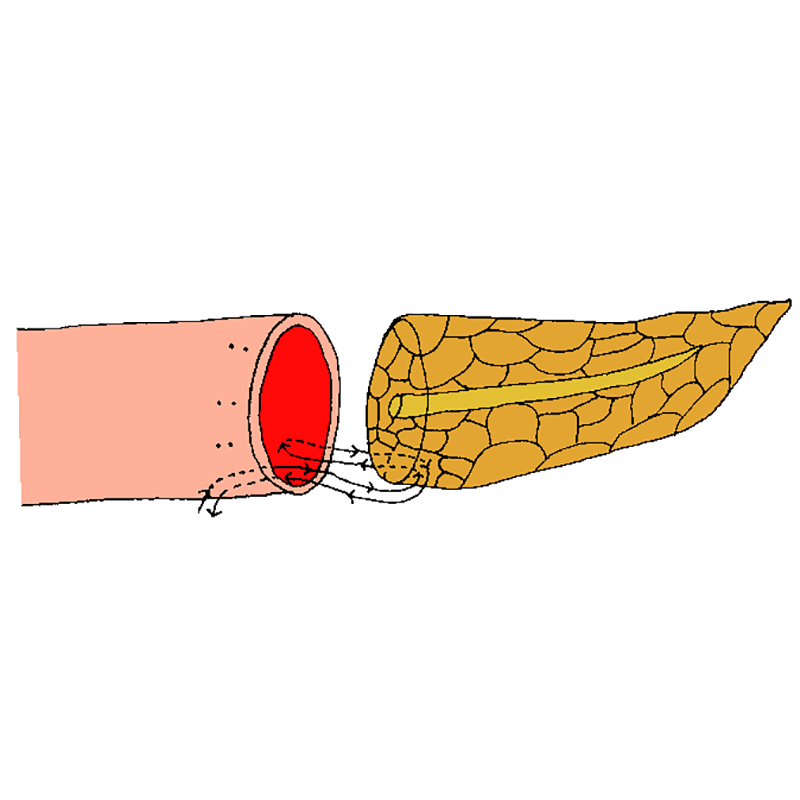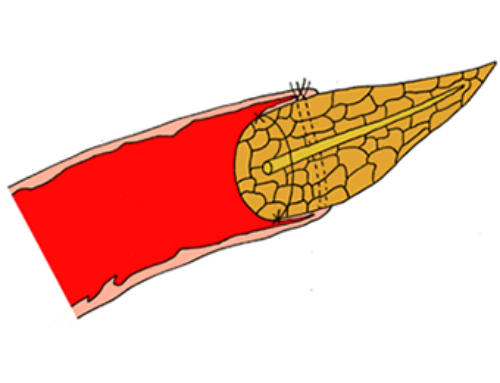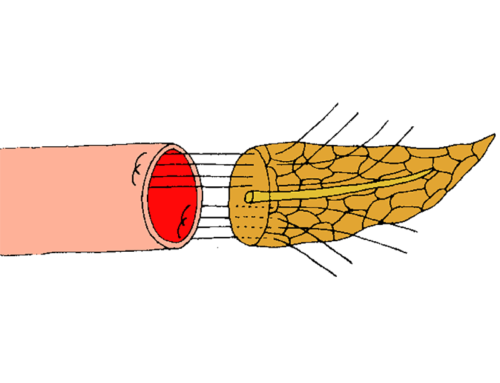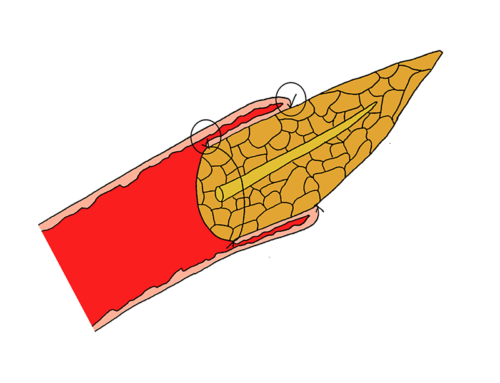The inner line of the anastomosis is performed using three or four horizontal mattress sutures parallel to the long axis of the pancreas. First, the needle is placed from outside the jejunum to inside the jejunal lumen, through the anterior caudal side of the jejunal wall about 3-4 cm from the cut edge. The needle is withdrawn from the jejunal opening at the cut end.
Two-layered invagination end-to-end pancreatojejunostomy with horizontal mattress sutures
- The inner line of the anastomosis is performed using three or four horizontal mattress sutures parallel to the long axis of the pancreas.
- First, the needle is placed from outside the jejunum to inside the jejunal lumen, through the anterior caudal side of the jejunal wall about 3-4 cm from the cut edge. The needle is withdrawn from the jejunal opening at the cut end.
- The full-thickness of the caudal pancreatic parenchyma is then penetrated from anterior to posterior, 2-3 mm from the pancreatic cut edge.
- The needle is passed through the posterior caudal wall of the jejunum from inside to outside and inserted back through the bowel wall, into the jejunal lumen, 2-3 mm closer to the cut edge. The needle is withdrawn from the jejunal opening at the cut end.
- The suture is placed through the full-thickness of the caudal pancreatic stump, next to the former suture-thread, now from posterior to anterior and 3-4 mm further away from the cut end.
- The needle is stitched through the anterior jejunal wall again, from inside to outside via the jejunal opening at the cut end. After all sutures are placed, the pancreas is fitted into the jejunum.
- Care needs to be taken to avoid injury to the main pancreatic duct.
- Circumferentially, an outer suture-line is applied between the full-thickness of the jejunum and the pancreatic capsule 3 cm from the cutting edges.
- Torer N, Ezer A, Nursal TZ. Mattress sutures for the modification of end-to-end dunking pancreaticojejunostomy. Hepatobiliary Pancreat Dis Int. 2013;12:556-558.






